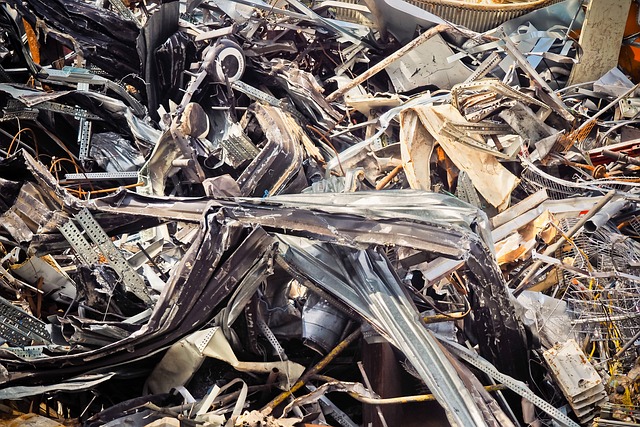
Resisting the urge to extract more metal from the Earth to lower emissions and boost performance in buildings worldwide is essential. The transition promises to enhance power conservation while preserving the planet’s resources.
How Does Circularity Look in Metal Construction?
Buildings use 50% of the world’s resources and account for 36% of its energy. Circular metal construction requires engineers, designers and architects to reduce waste, repurpose scraps and maximize resource life cycles. These principles will be pivotal for changing metalworker mindsets in the coming years to obtain more profound sustainability:
Construction experts must carry these principles alongside other process changes, such as digitization and automation. They should leverage building information modeling to learn optimized use cases. Software and other tech are integral for identifying where material cuts are possible.
Environmental impact reduction is at the heart of metal construction circularity. Aluminum and steel alone total 10% of the planet’s emissions, but reusing aluminum could make it up to 25 times less carbon-intensive. Using existing metal sets the building sector up for better climate resilience. The durability will make it stand strong against severe weather while letting sapped habitats recover from the damage.
What Steps Can the Industry Make to Achieve Circularity?
If companies employ a circular metal construction plan, what would that look like during and after implementation?
1. Implement Design for Disassembly (DfD)
Parts need to be recycling-friendly. This means modularity is key for successful deconstruction, also known as designing for disassembly. It also requires installing standardized connectors such as fasteners to make teardowns consistent and fluid.
DfD strategies influence countless other materials, such as timber construction’s reliance on metal fasteners despite corrosion.
2. Use Recycled and Reclaimed Materials
DfD matters only if the components are recycled or reclaimed. Supply chains must source from ethical places, regardless if it is steel or aluminum. Recently mined modular, raw materials don’t encompass a circular mindset. Certified, sustainable materials do because they encourage transparency and accountability for procurement departments.
3. Deploy Waste Management Practices
Waste management requires comprehensive installations, including on-site separation and sorting. Construction workers need to be able to dispose of scrap with minimal resistance. Additionally, stakeholders should require waste audits to keep tabs on how much trash builders generate against savings targets. This affirms the value of existing waste management infrastructure and determines their future.
4. Undergo Process Discovery
Manufacturers have as much responsibility as builders for designing strong, sustainable metal components. Using process discovery to find operational improvements reveals lean manufacturing and digitization are vital in reducing waste from defects and minimizing excess material from devices like CNC machines.
5. Develop Life Cycle Assessments (LCAs)
DfD and employing waste management are several efforts contributing to improved life cycle assessments (LCAs) for metal building parts. However, improving LCAs demands companies write guidelines for processing, installation and deconstruction. A life cycle assessment of steel production reveals green energy and prereduced iron could save 200 kilograms (441 pounds) of carbon emissions per metric ton. It could also include coatings or treatments to reinforce the products to make them last longer.
6. Advocate Policy and Reporting
Stakeholders and supply chains will fall into these habits in time and with education. Maintaining and continuously improving circular practices requires collaboration, policy and reporting. Engagement with governments with the combined forces of private and public entities is the best way to let policymakers know metal construction cares about circular laws.
Additionally, building robust frameworks for standards requires key performance indicator measurement. Implementing these mechanisms will verify the effectiveness of initiatives, notifying what adjustments need to be made for the following quarters.
What Obstacles Will Professionals Need to Overcome?
The dream of circularity isn’t without its challenges. All stakeholders should know the hurdles they will face so they have the tools to beat them.
High Costs
Every step in the metalmaking and shipping process will need new technology to make their operations circular. Antiquated equipment is not fit for the purpose. Therefore, implementation costs could be hard to justify.
However, builders can offset spending in other operational domains. For instance, they can finish metal buildings at double the speed of a stick-built structure. This saves on labor while opening doors for more projects to enter the schedule, increasing revenue. Organizations can then funnel additional income into supporting circular implementations, recycling infrastructure, or additional research and development.
Lack of Awareness and Resistance
Many workers don’t know how to operate with circular ideals in mind. This will require extensive training from corporations across the metal’s chain, including construction professionals and recyclers. Another hurdle within this problem is revising the culture within the metal sector. Short-term profits may be the focus instead of circularity, so making sustainability a core value may change how businesses strategize and educate employees.
Suboptimal Recycling Infrastructure
The lack of widespread metal recycling makes material availability scarce. It could be expensive because of limited access alongside high demand from ethical sources. Advocating for investments and supporting small suppliers using existing circular strategies is critical for increasing capacity.
Tracking and Reporting Complexity
Metal has a long journey ahead of it before installation happens. The path after is potentially even more lengthy, involving collection, processing and transportation to prevent it from hitting the end of its life cycle. Managing tracking at all stages could be overwhelming, but construction and supply chain management software helps corporations locate their stock at every step. Novel programs even include carbon footprint tracking for metals.
Never-Ending Metal
Metals have some of the highest potential regarding circularity. Despite obstacles hindering expedited progress, experts can rest knowing cursory solutions exist to get above the curve. The urgency to adopt circular metal has never been more dire, as it contributes more greenhouse gas emissions annually. The switch will make the industry more adaptable, carbon-friendly and scalable as buildings become pillars of energy efficiency.

